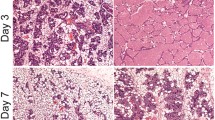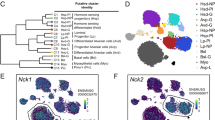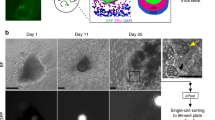Abstract.
After cessation of lactation, the mammary gland undergoes involution, which is characterized by a massive epithelial cell death and proteolytic degradation of the extracellular matrix. Whereas the expression patterns and also the function of TGF-β isoforms during mammary gland branching morphogenesis and lactation are well understood, their expression during postlactational involution and therefore a possible role in this process is poorly known. In this study we show that TGF-β3 expression is dramatically induced (>fivefold) during mouse mammary gland involution when compared to that of virgin mouse, reaching a maximal expression level at day 4 after weaning. In contrast, other TGF-β isoforms do not display significant increase in expression during involution (TGF-β1, 1.3-fold and TGF-β2, <1.5-fold) when compared to that of virgin or lactating mice. During mammary gland involution, TGF-β3 is expressed in the epithelial layer and particularly in myoepithelial cells. A comparison of the kinetics of TGF-β3 expression to that of programmed cell death and degradation of the basement membrane suggests that TGF-β3 functions in the remodeling events of the extracellular matrix during the second stage of involution.
Similar content being viewed by others
Author information
Authors and Affiliations
Additional information
Electronic Publication
Rights and permissions
About this article
Cite this article
Faure, E., Heisterkamp, N., Groffen, J. et al. Differential expression of TGF-β isoforms during postlactational mammary gland involution. Cell Tissue Res 300, 89–95 (2000). https://doi.org/10.1007/s004410000183
Received:
Accepted:
Issue Date:
DOI: https://doi.org/10.1007/s004410000183




